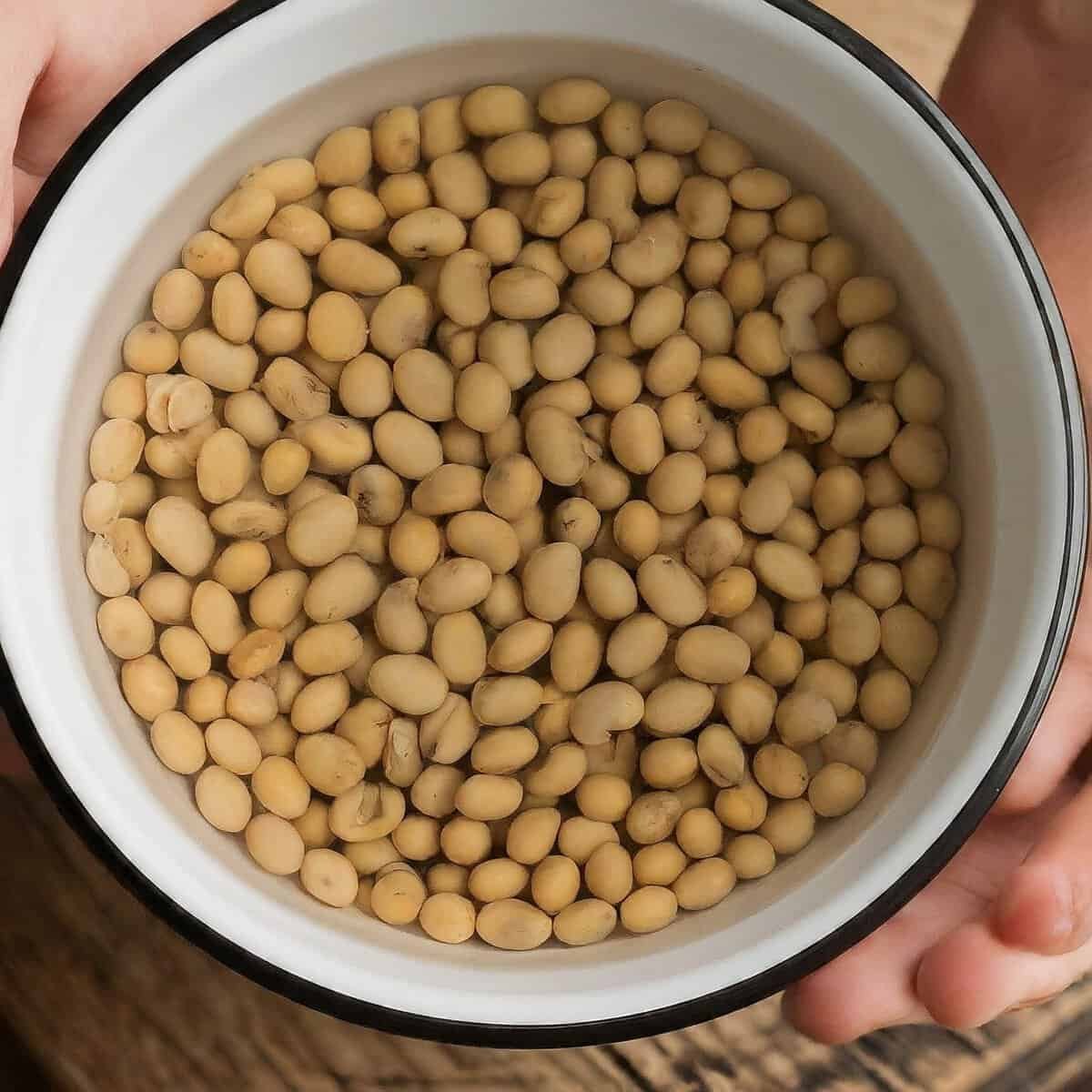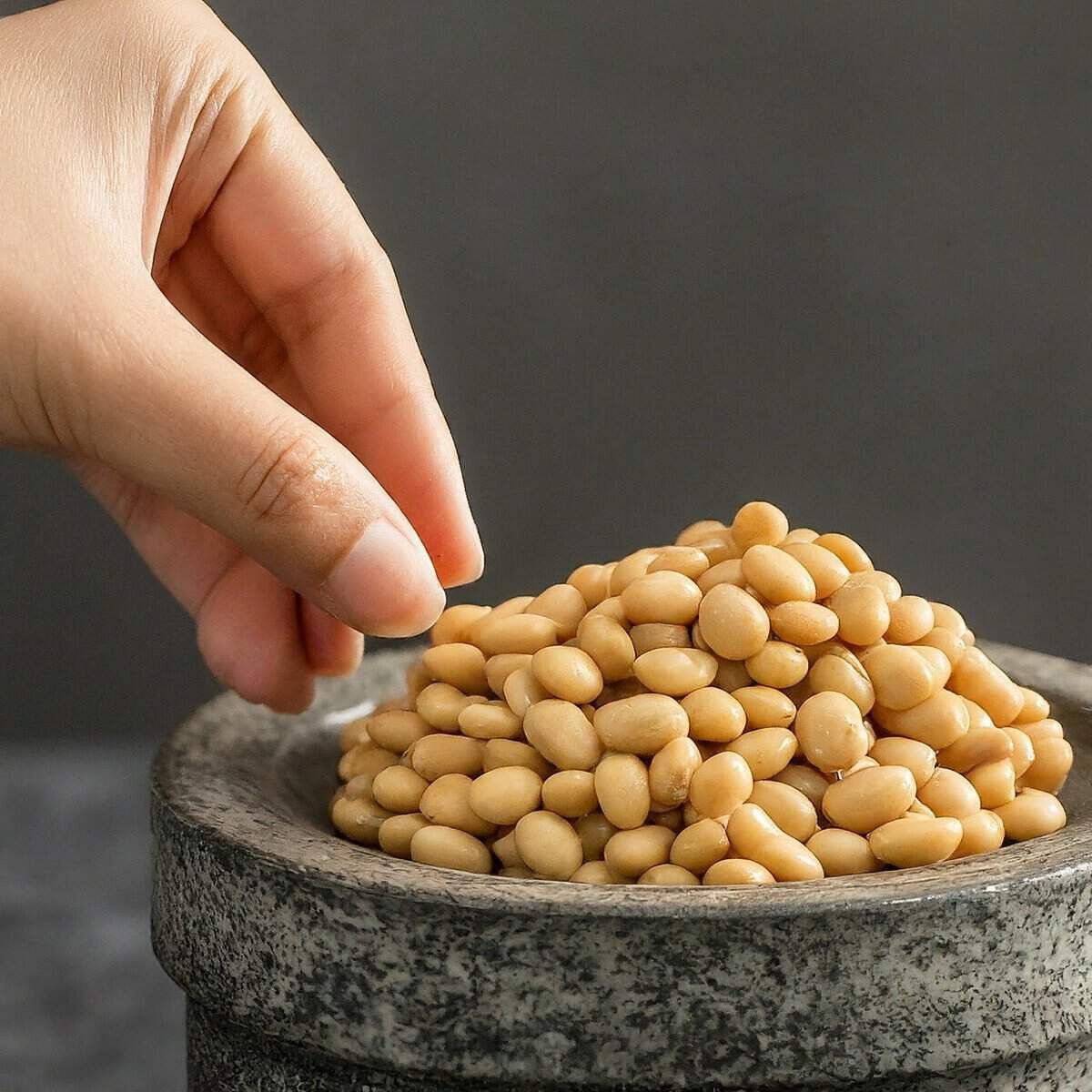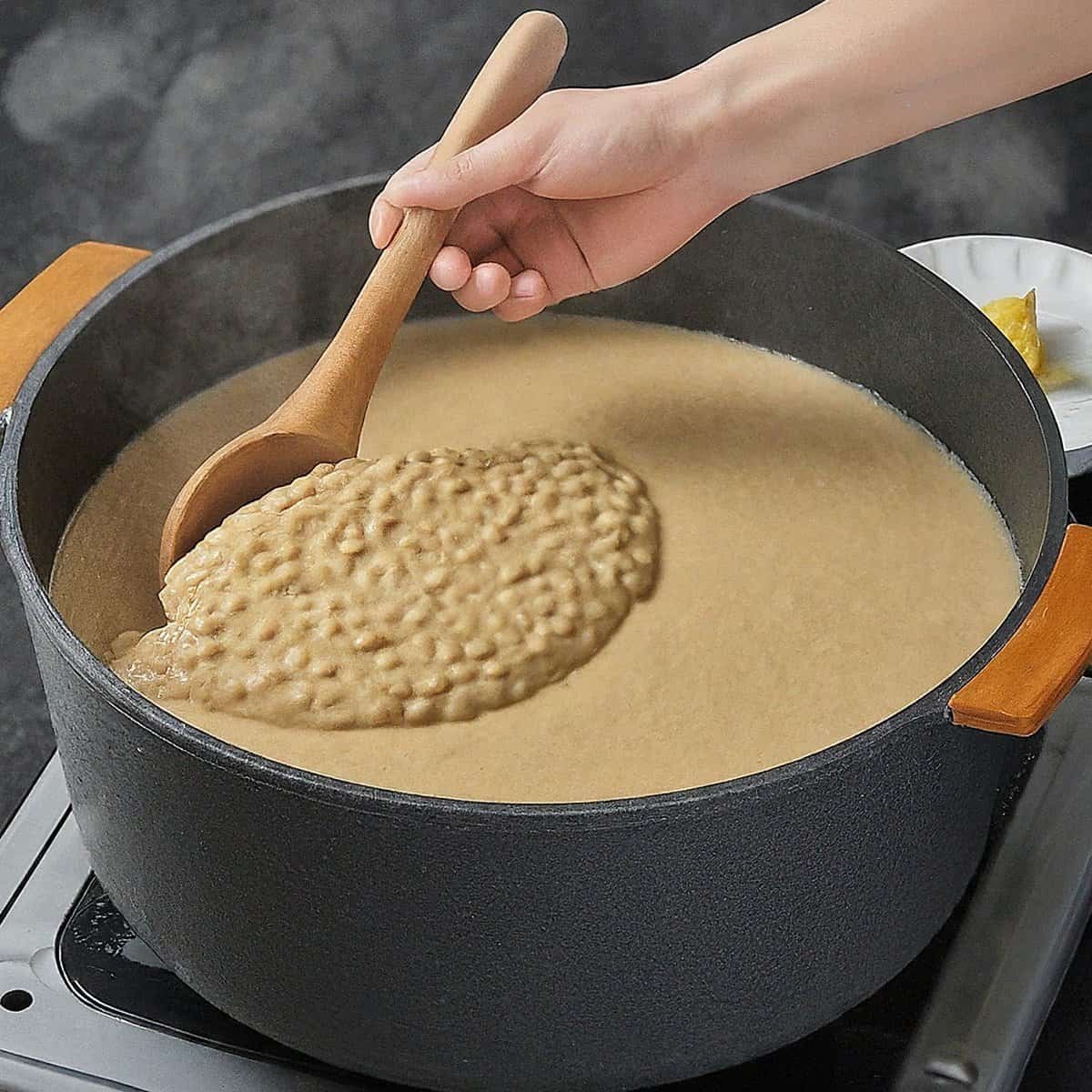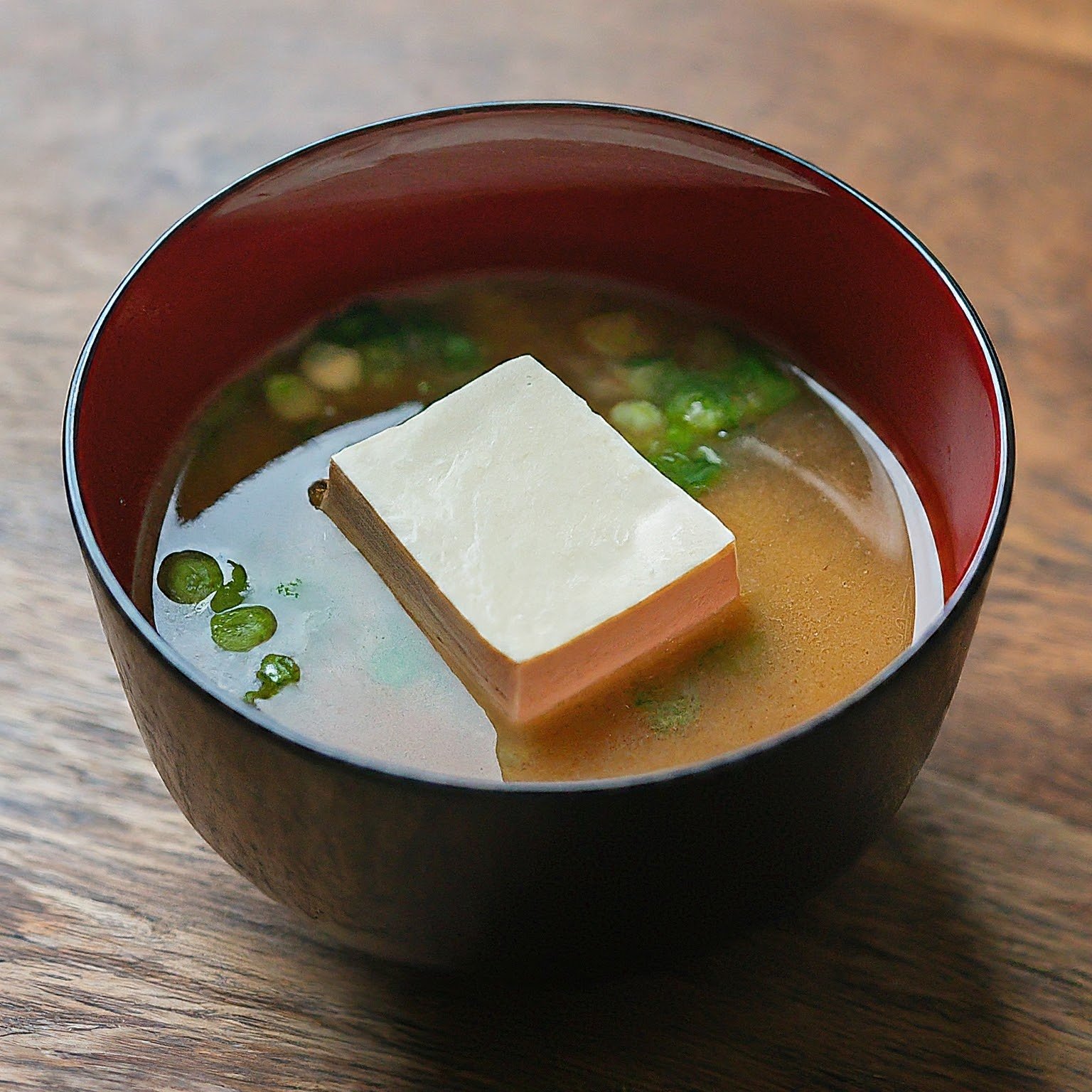To make tofu for beginners, soak soybeans overnight, blend them with water, boil the mixture, strain it to get soy milk, add a coagulant like nigari or lemon juice, let it curdle, and press the curds into a mold to form tofu.
Tofu 101: A Beginner’s Guide to Making Your Own Tofu at Home
Tofu, a versatile and nutritious food, has been a staple in many Asian cuisines for centuries. Derived from soybeans, tofu is a soft, white, and protein-rich food that can be used in a variety of dishes, from savory stir-fries to creamy desserts. Its origins can be traced back to ancient China, where it was first developed as a way to preserve and utilize the abundant soybean crop.
Tofu comes in a wide range of varieties, each with its own unique characteristics. From the delicate and silky soft tofu to the firm and dense extra-firm tofu, the different types of tofu offer a diverse range of textures and applications in the kitchen. Some varieties, such as fermented tofu or smoked tofu, even have distinct flavors that can add depth and complexity to a dish. Regardless of the type, tofu is a versatile ingredient that can be easily incorporated into both traditional and modern culinary creations.
Understanding the different varieties of tofu and their unique properties is essential for making the most of this nutritious and versatile ingredient. Whether you’re a seasoned tofu enthusiast or a newcomer to the world of plant-based proteins, exploring the world of tofu can open up a whole new realm of culinary possibilities.
Key Takeaways
- Tofu is a versatile and nutritious plant-based protein made from soybeans.
- Making your own tofu at home allows you to control the ingredients and customize the flavor and texture.
- The necessary ingredients for making tofu at home include soybeans, water, and a coagulant such as nigari or lemon juice.
- Preparing the soybeans involves soaking and blending them to create soy milk.
- Coagulating the curds involves adding a coagulant to the soy milk and allowing it to set before pressing and shaping the tofu.
The Benefits of Homemade Tofu
Making your own tofu at home can be a rewarding and fulfilling experience, offering numerous benefits beyond the convenience of store-bought options. One of the primary advantages of homemade tofu is the freshness and quality control it provides. By crafting your own tofu, you have the ability to ensure that the soybeans used are of the highest quality and that the entire production process is carried out with meticulous attention to detail. This level of control allows you to create a tofu that is not only fresher but also tailored to your specific preferences.
Another significant benefit of homemade tofu is the ability to customize the texture and flavor to your liking. Store-bought tofu often comes in a limited range of textures, from soft to extra-firm. By making your own, you can experiment with different coagulants, pressing techniques, and even the addition of herbs and spices to create a tofu that perfectly suits your culinary needs. This level of customization can be especially valuable for those with specific dietary requirements or preferences.
In addition to the quality and customization benefits, making your own tofu at home can also result in potential cost savings compared to purchasing it from the store. While the initial investment in equipment and ingredients may be higher, the long-term savings can be significant, especially for those who consume tofu regularly. Furthermore, the satisfaction of creating a staple ingredient from scratch can be a rewarding experience that adds to the overall enjoyment of cooking and eating.
Here’s a table displaying the calorific value of different types of tofu:
| Type of Tofu | Serving Size | Calories | Protein (g) | Fat (g) | Carbohydrates (g) |
|---|---|---|---|---|---|
| Firm Tofu | 100 grams | 70 | 8.2 | 4.2 | 1.9 |
| Extra Firm Tofu | 100 grams | 80 | 8.9 | 4.9 | 1.7 |
| Silken Tofu | 100 grams | 55 | 4.8 | 2.7 | 2.1 |
| Soft Tofu | 100 grams | 55 | 5.3 | 2.7 | 2.2 |
| Fried Tofu | 100 grams | 270 | 13.2 | 20.2 | 7.4 |
| Baked Tofu | 100 grams | 120 | 12 | 7 | 2 |
Gathering the Necessary Ingredients
To embark on your homemade tofu-making journey, you’ll need to gather a few essential ingredients and equipment. The primary ingredient, of course, is soybeans. When selecting soybeans for tofu-making, it’s important to choose a high-quality, food-grade variety that is free from any contaminants or impurities. The type of soybean can also affect the final texture and flavor of the tofu, so it’s worth experimenting with different varieties to find the one that best suits your preferences.
In addition to the soybeans, you’ll need a coagulant to help transform the soy milk into curds. Common coagulants used in tofu-making include nigari (magnesium chloride), lemon juice, or a specialized tofu coagulant. Each coagulant has its own unique effect on the texture and flavor of the final tofu, so it’s important to understand their properties and how they interact with the soy milk.
The equipment required for homemade tofu-making may seem daunting at first, but with a few essential tools, you can easily craft your own tofu at home. A sturdy blender or food processor is necessary for grinding the soaked soybeans into a smooth soy milk. A cheesecloth or fine-mesh strainer is used to separate the soy milk from the okara (soy pulp). A tofu mold or container, along with a weight or press, is required to shape and firm up the tofu curds. It’s crucial to ensure that all the equipment used is food-grade and properly sanitized to maintain the highest standards of food safety.
Investing in the right ingredients and equipment is the foundation for successful homemade tofu-making. By carefully selecting and preparing these essential components, you’ll be well on your way to creating delicious and nutritious tofu in the comfort of your own kitchen.
Preparing the Soybeans
The first step in making homemade tofu is to properly prepare the soybeans. This process begins with soaking the beans in water for an extended period, typically 8 to 12 hours or overnight. The duration and water temperature used for soaking can have a significant impact on the final texture and flavor of the tofu.
During the soaking process, the soybeans will absorb water and swell, making them easier to grind into a smooth soy milk. The water temperature used for soaking can also affect the final texture of the tofu. Cooler water, around 60-70°F (15-21°C), is generally recommended for a softer, silkier tofu, while warmer water, around 80-90°F (27-32°C), can result in a firmer, more robust texture.
Once the soybeans have been soaked, the next step is to grind them into a smooth soy milk. This can be done using a high-powered blender or food processor, ensuring that the mixture is finely ground and free of any large particles. The resulting soy milk should have a creamy, uniform consistency.
After grinding the soybeans, the soy milk needs to be strained to remove the okara, or soy pulp, which is the insoluble fiber left behind. This can be done using a cheesecloth or a fine-mesh strainer, ensuring that the soy milk is as clear and smooth as possible.
It’s worth noting that while fresh, whole soybeans are the traditional choice for homemade tofu, you can also use dried or frozen soybeans with some adjustments to the preparation process. Dried soybeans may require a longer soaking time, while frozen soybeans may need to be thawed before grinding. Experimenting with different soybean sources can help you find the one that works best for your preferences and needs.
Cooking the Soy Milk
| Ingredients | Amount |
|---|---|
| Soybeans | 1 cup |
| Water | 4 cups |
| Coagulant (such as Nigari or lemon juice) | 1-2 tsp |
| Equipment: | |
| Blender or food processor | |
| Cheesecloth or tofu press | |
| Large pot |
With the soy milk prepared, the next step in the tofu-making process is to cook the soy milk. This crucial step helps to denature the proteins in the soy milk, making them more susceptible to coagulation and the formation of tofu curds.
The soy milk should be heated to a specific temperature range, typically between 185-195°F (85-91°C), and maintained at this temperature for a certain duration. This simmering process helps to concentrate the soy milk, making it more suitable for curd formation.
During the cooking process, it’s important to maintain a gentle, consistent simmer, avoiding rapid boiling or excessive agitation, which can disrupt the delicate balance of the soy milk. The duration of the cooking process can vary depending on the desired texture of the final tofu, with longer cooking times generally resulting in a firmer, more compact tofu.
As the soy milk cooks, it’s essential to monitor it closely for signs of readiness. These signs may include the appearance of small bubbles or a slight thickening of the liquid. It’s also important to adjust the cooking time based on the specific characteristics of the soy milk, as factors such as the type of soybeans used and the initial water content can affect the optimal cooking duration.
By carefully controlling the temperature and duration of the cooking process, you can ensure that the soy milk is properly prepared for the next step of coagulation, which is crucial for the successful formation of tofu curds.
Coagulating the Curds
The next critical step in making homemade tofu is the coagulation process, where the soy milk is transformed into tofu curds. This is achieved by introducing a coagulant, which causes the proteins in the soy milk to separate and form solid curds.
There are several types of coagulants commonly used in tofu-making, each with its own unique effects on the final texture and flavor of the tofu. Common coagulants include nigari (magnesium chloride), lemon juice, or specialized tofu coagulants. The choice of coagulant can significantly impact the firmness, silkiness, and even the taste of the finished tofu.
When adding the coagulant, it’s crucial to determine the optimal amount and timing to achieve the desired curd formation. Too little coagulant may result in incomplete curd formation, while too much can lead to a dense, rubbery texture. The coagulant is typically added to the hot soy milk, and the mixture is then gently stirred or left to rest, allowing the curds to form and separate from the whey.
As the coagulation process takes place, it’s important to observe the curd formation closely. The curds should begin to form and separate from the whey, creating a clear, yellowish liquid. The duration of this process can vary depending on the type and amount of coagulant used, as well as the temperature of the soy milk.
Once the curds have formed, the next step is to carefully drain the whey and transfer the curds to a mold or container for pressing and shaping. This delicate process requires a gentle touch to ensure that the fragile curds are not disrupted or broken apart.
By mastering the coagulation process, you can unlock the full potential of your homemade tofu, creating a final product that is not only nutritious but also tailored to your specific preferences.
Pressing and Shaping the Tofu
With the tofu curds successfully separated from the whey, the next step is to press and shape the tofu. This process is crucial for achieving the desired texture and firmness of the final product.
The first step in this stage is to select an appropriate mold or container for shaping the tofu. This can be as simple as a basic tofu mold or as versatile as a repurposed container, such as a plastic tub or a cheesecloth-lined colander. The size and shape of the mold will determine the final size and form of the tofu block.
Once the mold is ready, the tofu curds are carefully transferred into it. Applying pressure to the curds is the next crucial step, as this helps to expel the remaining whey and compact the tofu into a cohesive, firm block. This can be done using a weight, such as a heavy plate or a specialized tofu press, which is placed on top of the curds and left to apply pressure for a specific duration.
The amount of pressure and the pressing time can be adjusted to achieve the desired texture of the tofu. Longer pressing times and higher pressure will result in a firmer, denser tofu, while shorter pressing times and lighter pressure will yield a softer, more delicate texture.
After the pressing is complete, the tofu block is carefully removed from the mold. This step requires a gentle touch to ensure that the tofu maintains its shape and structure. The finished tofu can then be cut or sliced into the desired portions, ready to be used in a variety of culinary applications.
Mastering the pressing and shaping process is essential for creating homemade tofu with the perfect texture and consistency. By experimenting with different molds, pressing techniques, and durations, you can develop a tofu-making process that suits your personal preferences and culinary needs.
Storing and Preserving Homemade Tofu
Once you’ve successfully crafted your homemade tofu, the next step is to properly store and preserve it for future use. Proper storage is crucial for maintaining the freshness, texture, and flavor of your tofu.
Fresh, unpressed tofu has a relatively short shelf life, typically lasting only a few days when stored in the refrigerator. To extend the shelf life, it’s important to store the tofu in an airtight container, submerged in water, and change the water daily. This helps to prevent the tofu from drying out and maintain its soft, creamy texture.
For longer-term storage, freezing the tofu is an excellent option. Frozen tofu can be kept for several months, making it a convenient ingredient to have on hand. To freeze tofu, simply place the block or slices in an airtight container or freezer-safe bag, removing as much air as possible. When ready to use, thaw the tofu in the refrigerator, and it will be ready to incorporate into your favorite dishes.
In addition to simple storage methods, you can also explore ways to marinate or flavor your homemade tofu. Soaking the tofu in various marinades, sauces, or seasonings can add depth and complexity to the flavor profile, making it even more versatile in the kitchen.
Regardless of how you choose to store or flavor your homemade tofu, it’s crucial to maintain proper food safety practices. This includes ensuring that all equipment and surfaces are thoroughly cleaned and sanitized, and that the tofu is handled and stored in a way that minimizes the risk of bacterial growth or contamination.
By mastering the storage and preservation techniques for your homemade tofu, you can enjoy the freshness, quality, and customization that comes with crafting this versatile ingredient from scratch.
Recipes and Cooking Ideas for Homemade Tofu
Now that you’ve successfully made your own tofu at home, the possibilities for culinary exploration are endless. Homemade tofu can be incorporated into a wide range of dishes, from simple preparations to more complex and flavorful creations.
One of the most straightforward ways to enjoy homemade tofu is through simple preparations, such as pan-frying, steaming, or adding it directly to your favorite dishes. The firm or extra-firm varieties of tofu are particularly well-suited for these types of preparations, as they hold their shape and texture well during cooking.
Beyond these basic preparations, homemade tofu can be seamlessly integrated into a variety of cuisines and recipes. In Asian-inspired dishes, tofu can be the star ingredient in stir-fries, soups, or even as the main component in dishes like mapo tofu or agedashi tofu. In Western-style cooking, tofu can be used to create creamy sauces, replace dairy in desserts, or serve as a meat alternative in dishes like tofu burgers or tofu “meatballs.”
The versatility of homemade tofu also allows for endless experimentation with different flavors and marinades. You can infuse the tofu with aromatic herbs, spices, or sauces to create unique flavor profiles that complement a wide range of cuisines. Marinating the tofu before cooking can also help to enhance its texture and infuse it with delicious flavors.
As you continue to explore the world of homemade tofu, don’t be afraid to get creative in the kitchen. Experiment with different cooking techniques, flavor combinations, and recipe ideas to discover the full potential of this nutritious and versatile ingredient. With a little creativity and culinary know-how, your homemade tofu can become the foundation for countless delicious and satisfying meals.
FAQs
What is tofu?
Tofu is a food made from soybeans that is a popular ingredient in many Asian cuisines. It is also known as bean curd and is made by coagulating soy milk and then pressing the resulting curds into soft white blocks.
How is tofu made?
Tofu is made by soaking, grinding, and boiling soybeans to produce soy milk. The soy milk is then coagulated using a coagulant such as calcium sulfate or magnesium chloride. The resulting curds are then pressed into blocks to form tofu.
Can I make tofu at home?
Yes, it is possible to make tofu at home using simple ingredients and equipment. Making tofu at home allows you to control the ingredients and customize the flavor and texture to your liking.
What ingredients do I need to make tofu at home?
To make tofu at home, you will need soybeans, water, a coagulant such as calcium sulfate or magnesium chloride, and a tofu mold or a makeshift mold such as a colander lined with cheesecloth.
Is making tofu at home difficult?
Making tofu at home requires some time and effort, but it is not overly difficult. With the right ingredients and equipment, you can successfully make your own tofu at home.
What are the benefits of making tofu at home?
Making tofu at home allows you to control the quality of ingredients, customize the flavor and texture, and avoid additives and preservatives that may be present in store-bought tofu. Additionally, making tofu at home can be a fun and rewarding culinary experience.
Originally posted 2024-05-27 10:01:59.









